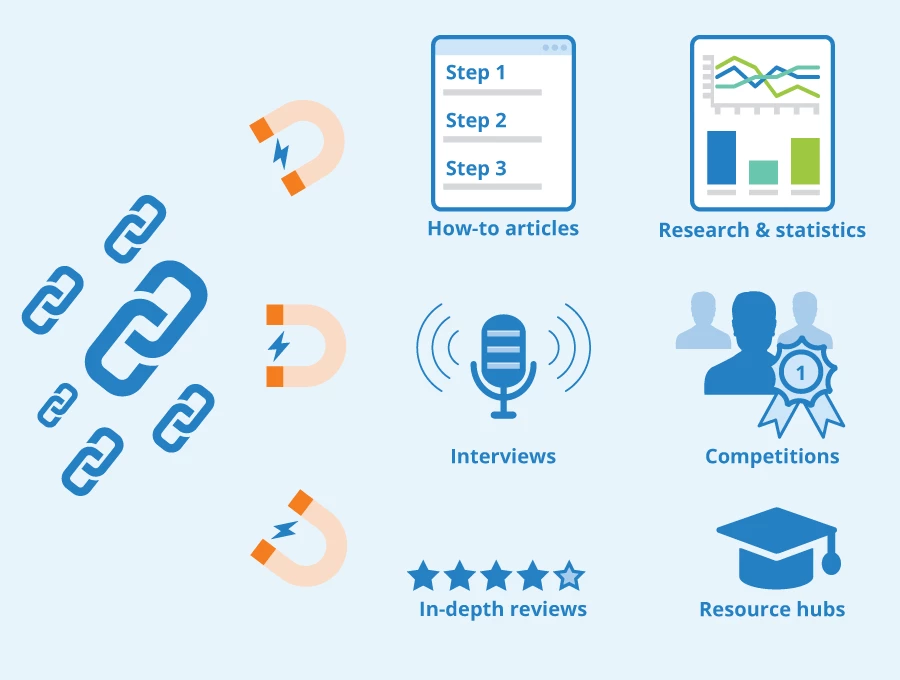Business
A Detailed Guide About Paraphrasing and Summarising You Must Know

Integrating a relevant piece of information into your scholarly writing is a challenging task. The two major ways of doing so are paraphrasing and summarising. Both these ways are different from each other and have different ways of incorporating information into the scholarly document. It is important to remember that all the sources that you use, either using a paraphrasing or summarising technique, should back up the main argument. They must not state an argument in themselves.
As you are here reading this post, it means you do not have an idea about paraphrasing and summarising. Also, you are here to learn how to paraphrase and summarise a piece of information correctly to incorporate it into your writing. Well, you have come to the right place. In today’s article, we will discuss both of these ways in detail. However, first of all, let’s define both of them.
What does it mean by paraphrasing?
The technique of paraphrasing involves taking a paragraph from the source paper and putting it into your scholarly text. The key thing here is that the paragraph taken is not placed as it is, but it is paraphrased. It means you have to grab the overall concept of the paragraph and write it in your own words and then incorporate it into your writing. The paraphrased paragraph is usually shorter in length than the original paragraph.
What does it mean by summarising?
Paraphrasing and summarising seem like same, but they are not. Summarising is more focused on the ideas and concepts discussed in the original paper instead of the words used. When summarising, you take a broader view of the original paper and present the main ideas in your own words. Summarising is not about discussing the original paper paragraph by paragraph. Instead, when summarising, you take the major sections of the source material into account and discuss their ideas in your document.
Steps involved in paraphrasing a source material
From the discussion above, you have got a good idea of what paraphrasing is. However, you still do not know how to paraphrase original writing or source material. Therefore, it is now time to discuss this and a brief description of the major steps involved is as follows:
- Read the paragraph. The first and most important step is to read the target paragraph that you want to paraphrase. Reading allows you to have a deeper understanding of the meaning of the paragraph, which is necessary for paraphrasing.
- Remove unnecessary text. A paraphrased paragraph is always shorter than the original one. Therefore, you must not aim for word-by-word changing. Instead, remove the unnecessary text, grab the overall idea, and start writing it in your own words.
- Use signal phrases. Signal phrases are used to distinguish between your material and the material that you have taken from another source. For example, “scientists believe that ..” Therefore, always use the signal phrase when paraphrasing.
- Retain key terms. There is no need to change the key terms of the paragraph. You must retain them as they are the essence of the whole paragraph. However, if you do not know how to paraphrase by retaining them, take some help from assignment writing services working online.
Key steps involved in summarising a source material
As discussed earlier, summarising is the second way to incorporate source material into your document. To summarise the source material effectively, there are some steps that you need to follow. A brief description of all those steps is as follows:
- Read the text. The first step is the same in paraphrasing and summarising. As the writer, you need to read the source material thoroughly and completely understand it. This extensive reading exposes you to the main ideas discussed in the source writing.
- Find the main ideas. The second step in summarising a text is to look for the main ideas present in it. The main ideas may be found in the abstract of the original paper or in the topic sentences of the paragraphs. Wherever they are, just find them.
- Note the main ideas. After their identification, you must note down the main ideas in your notebook. This will allow you to keep track of all the ideas found. Otherwise, you may forget some main and critical ideas discussed.
- Write the summary. Lastly, it is time to kick off the writing process of the summary. Start with the most critical idea discussed and keep on adding the ideas until they are finished. There is no need to make separate paragraphs for the summary. A summary itself is one to two paragraphs.
Conclusion
Paraphrasing and summarising are two widely used ways to incorporate a piece of information in a scholarly text. The former technique is based on the rewriting and rewording of the paragraphs. On the other hand, the latter is about the summarisation of the key ideas. The key steps discussed above will help you a lot in paraphrasing and summarising. So, read them carefully and perform these techniques accordingly.

Business
How Businesses Can Foster Safe and Inclusive Workplaces

What Is a Safe and Inclusive Workplace?
Creating a safe and inclusive workplace is an ongoing commitment that requires intentional policies, continuous education, and accountable leadership. When organizations prioritize respect, equity, and psychological safety, employees are more engaged, productive, and innovative. Integrating wellness resources, such as opportunities to learn about nutrition Clarkston, MI, further supports employees’ overall well-being and reinforces a culture of care. By measuring progress, addressing challenges proactively, and embedding inclusion into everyday practices, companies comply with legal standards and cultivate a culture where everyone can thrive—driving long-term success for both people and the business.
Why Company Culture Matters
A company’s culture is the collective personality that shapes how people interact, collaborate, and solve problems. Company culture is rooted in visible behaviors, day-to-day operations, written values, and the subtle ways leaders and colleagues interact. An inclusive culture championed by management sets a positive tone and signals to staff that respect, equity, and fairness are non-negotiable values.
A positive culture makes it easier for people of all backgrounds and abilities to feel seen and heard. Leaders who uphold these principles ensure that everyone, from interns to executives, understands what inclusion looks like in everyday situations.

Building Effective Policies
Robust, visible policies underpin successful, safe, and inclusive workplaces. These must extend beyond anti-discrimination language to address the diverse needs of employees, such as accommodations for religious practices, disabilities, gender identity, and parental responsibilities. Policies should be developed with input from employees and subject-matter experts to ensure they are practical, relevant, and current.
- Clearly define what safety and inclusion mean for your business and sector.
- Create straightforward reporting procedures, ensuring every team member knows how and where to report issues.
- Outline fair investigation processes and consequences for policy violations to reinforce accountability.
- Review all policies annually and communicate updates regularly to reinforce expectations.
To foster trust, ensure that all documents are easily accessible and comprehensible, and provide training that enables policies to be effectively implemented in real-life situations.
Training and Education Programs
Continuous education is essential for changing mindsets and behaviors. Training efforts focusing on diversity, equity, and inclusion should go beyond awareness-raising, helping team members understand how to call out exclusionary practices and become effective allies. Regular workshops, simulations, and discussions of real-world scenarios ensure that information sticks and leads to lasting change.
Leadership and Accountability
Leadership’s role is critical in setting expectations and modeling desired behaviors. Senior management and supervisors must be trained to recognize unconscious biases, address issues swiftly, and celebrate team successes related to inclusion. Regular performance reviews that assess leadership’s inclusivity ensure ongoing commitment.
Transparency in how issues are handled and shared success stories fosters a sense of collective responsibility. When accountability is embedded at all levels—from frontline workers to executives—employees understand that safe and inclusive behavior is a non-negotiable standard.
Measuring Progress and Success
Determining if policies and programs are effective starts with clear targets and ongoing evaluation. Many organizations use employee surveys, pulse checks, or third-party audits to collect meaningful qualitative and quantitative feedback. These insights reveal whether staff feel safe and valued and can surface areas requiring further improvement.
Regularly sharing progress fosters transparency and trust, making clear that employee voices directly shape company priorities.
Common Challenges and Solutions
Roadblocks may arise during efforts to build a safe and inclusive environment. Resistance to change, a lack of resources, or legacy behaviors can create setbacks. Overcoming these challenges requires intentional communication, dedicated resources, and ongoing reinforcement of the business case for inclusion.
- Resistance to Change: Address skepticism with transparent communication and real-life workplace benefits.
- Unconscious Bias: Combat through tailored training sessions and reflective leadership assessments.
- Resource Constraints: Start small by celebrating early wins and leveraging free external toolkits and resources.
Keeping communication channels open and fostering psychological safety helps sustain engagement and momentum, helping organizations stay adaptable in a changing landscape.
Final Thoughts
Creating a safe and inclusive workplace is an ongoing commitment that requires intentional policies, continuous education, and accountable leadership. When organizations prioritize respect, equity, and psychological safety, employees are more engaged, productive, and innovative. By measuring progress, addressing challenges proactively, and embedding inclusion into everyday practices, companies comply with legal standards and cultivate a culture where everyone can thrive—driving long-term success for both people and the business.
Business
5 Success Stories from Leading Logistics Marketing Agencies

In today’s rapidly evolving marketplace, logistics marketing agencies play a crucial role in bridging the gap between supply chain efficiency and customer engagement. These specialized firms leverage a deep understanding of the logistics sector, utilizing innovative strategies to help companies maximize their reach and drive growth. Here, with the increasing complexity of global trade, the demand for adept marketing tailored specifically to the logistics industry has surged here today’s rapidly evolving marketplace, logistics marketing agencies play a crucial role in bridging the gap between supply chain efficiency and customer engagement. These specialized firms leverage a deep understanding of the logistics sector, utilizing innovative strategies to help companies maximize their reach and drive growth. Here, with the increasing complexity of global trade, the demand for adept marketing tailored specifically to the logistics industry has surged.
These agencies are not just about promoting services; they are data-driven, crafting campaigns that resonate with target audiences while enhancing brand visibility. From search engine optimization (SEO) to targeted digital advertising, they employ a range of techniques to ensure that logistics companies stand out in a crowded marketplace.
As we delve into the success stories of various logistics marketing agencies, we will uncover how they have transformed their clients’ operations, enhanced their online presence, and ultimately driven significant business outcomes. By showcasing these achievements, we aim to highlight the invaluable role logistics marketing agencies play in the modern business landscape, making them indispensable partners for companies striving to thrive in this competitive environment.
Importance of Marketing in the Logistics Industry
In the increasingly competitive logistics industry, effective marketing is not just a luxury — it’s a necessity. The nuances of this sector demand a strategic approach that combines traditional marketing techniques with advanced digital strategies. As logistics firms strive to differentiate themselves, marketing becomes the driving force behind brand recognition and customer loyalty.
One of the primary roles of marketing in logistics is to educate potential clients about the complexities and benefits of various services. With rapid technological advancements and shifting consumer expectations, agencies that effectively communicate their value propositions can capture market share and establish trust.
Moreover, targeted marketing campaigns help logistics companies to reach niche markets and tailor their offerings accordingly. By leveraging data analytics, agencies can identify customer pain points and provide solutions that resonate with specific audiences.
Finally, a strong marketing presence enhances a company’s reputation in an industry often plagued by misconceptions. By showcasing success stories and transparent operations, logistics firms can build credibility and foster long-term relationships. In essence, marketing is not merely an add-on; it’s the backbone of growth and sustainability in the logistics landscape.
Overview of Success Stories
In the ever-evolving landscape of logistics, marketing agencies have emerged as pivotal players, transforming how companies connect with their audiences. These success stories highlight innovative strategies that have led to remarkable growth and brand recognition, with the specific agencies involved remaining undisclosed due to NDA agreements.
One standout example involves a mid-sized freight company that, with the help of a specialized marketing agency, revamped its digital presence. By implementing a targeted SEO strategy and launching engaging content campaigns, they saw a 150% increase in organic traffic within six months.
Another success story features a logistics startup that harnessed the power of social media advertising. Through compelling visuals and customer testimonials crafted by their marketing partner, they not only amplified their brand visibility but also achieved a 300% increase in lead generation within a year.
Additionally, a renowned global shipping firm collaborated with a marketing agency to enhance customer engagement through personalized email campaigns. The result? An impressive 45% boost in customer retention rates.
These narratives illustrate the profound impact that strategic marketing initiatives can have on logistics businesses, driving growth, fostering innovation, and ultimately reshaping the industry landscape.
Case Study 1: Innovative Strategies from Agency A

Agency A has redefined success in the logistics marketing arena through a blend of innovative strategies that cater specifically to the unique challenges of the industry. One standout initiative involved a comprehensive digital transformation project for a mid-sized freight company struggling with visibility and market penetration.
Recognizing the importance of data-driven decisions, Agency A implemented advanced analytics tools to assess customer behavior and identify key pain points. This insight laid the groundwork for a targeted content marketing strategy that included informative blogs, engaging videos, and interactive webinars, tailored to educate potential clients on industry trends and best practices.
To complement this content strategy, Agency A leveraged social media platforms, creating a robust online presence that allowed the client to connect directly with their target audience. A series of compelling case studies showcasing successful logistics solutions further established the client as a thought leader in the space.
The results were impressive: within six months, website traffic surged by 150%, and lead generation doubled. Agency A’s innovative approach not only improved brand visibility but also fostered lasting relationships, proving that thoughtful marketing can transform logistics businesses in a competitive landscape.
Case Study 2: Transformative Campaigns by Agency B
Agency B, a trailblazer in logistics marketing, recently executed a transformative campaign for a mid-sized freight company struggling to stand out in a saturated market. The agency initiated a thorough market analysis, identifying key pain points within the target audience — specifically, the need for transparency and reliability during shipment processes.
With insights in hand, Agency B crafted a multi-platform strategy that prominently featured customer testimonials and real-time tracking features. They launched an engaging social media campaign showcasing behind-the-scenes operations, which humanized the brand and built trust with potential clients. The campaign’s centerpiece was an interactive website redesign that emphasized user experience, allowing clients to easily access shipment status and logistics updates.
The results were remarkable. Within six months, the freight company saw a 40% increase in website traffic and a 25% boost in lead generation. Most impressively, customer retention rates improved significantly, as clients felt more connected and informed throughout the shipping journey. Agency B’s innovative approach not only transformed the freight company’s brand image but also set a new standard for customer engagement in the logistics sector, demonstrating the power of targeted, transparent marketing.
Case Study 3: Data-Driven Success from Agency C
- Increased Website Traffic: A 150% surge in monthly visitors due to optimized SEO and strategic content marketing.
- Lead Generation: The campaign generated a 200% increase in qualified leads within just three months.
- Conversion Rates: The brokerage saw a 35% rise in conversion rates, directly linking data-driven personalization to successful customer engagement.
- Cost Efficiency: By reallocating budget to high-performing channels identified through analytics, the client reduced their customer acquisition cost by 25%.
- This case exemplifies how Agency C’s data-driven methodologies not only foster growth but also empower logistics companies to make informed decisions that drive long-term success.
Case Study 4: Creative Branding by Agency D
Agency D took a bold step in redefining its client’s brand identity, which was struggling to resonate in an increasingly competitive logistics market. The agency embarked on a comprehensive rebranding campaign that highlighted the company’s commitment to sustainability and innovation.
Through meticulous market research, Agency D discovered that their client’s target audience was particularly passionate about eco-friendly practices. Leveraging this insight, they crafted a striking new logo and a vibrant visual identity that incorporated green elements and modern typography. The campaign’s centerpiece was a digital storytelling initiative, showcasing the logistics company’s journey toward sustainability through engaging video content and infographics.
This multifaceted approach not only revamped the brand’s image but also created a community around its values. The result? A remarkable 40% increase in brand engagement on social media platforms and a 30% rise in customer inquiries within just six months. Agency D’s creative branding efforts not only repositioned the client as a leader in sustainable logistics but also fostered lasting connections with environmentally-conscious consumers. This case highlights how innovative branding can transform perceptions and drive tangible results in the logistics sector.
Case Study 5: Technology Integration by Agency E
In an era where technology dictates market dynamics, Agency E has revolutionized logistics marketing through strategic technology integration. By leveraging advanced analytics and AI-driven insights, Agency E transformed a traditional freight brokerage into a tech-savvy logistics powerhouse.
The agency embarked on a comprehensive data-driven campaign that incorporated machine learning algorithms to predict shipping trends and optimize routes. This not only enhanced operational efficiency but also significantly reduced costs for their clients. By integrating a user-friendly digital platform, they provided real-time tracking capabilities, allowing customers to monitor their shipments with unparalleled transparency.
Additionally, Agency E implemented a customer relationship management (CRM) system tailored to the logistics sector, enabling personalized communication and targeted marketing strategies. This integration led to a 40% increase in customer engagement and a dramatic rise in repeat business.
The success of this initiative is reflected in the agency’s remarkable 30% growth in revenue over just one year. By marrying logistics with cutting-edge technology, Agency E has set a benchmark for the industry, proving that innovation is key to thriving in a competitive landscape. Their story serves as an inspiration for other logistics marketing agencies looking to harness the power of technology for success.
Key Takeaways from the Success Stories

The success stories from leading logistics marketing agencies reveal several key takeaways that can inspire others in the industry. First and foremost, the importance of data-driven decision-making stands out. Agencies that leverage analytics to tailor their strategies consistently outperform those that rely on intuition alone. This data-centric approach not only enhances targeting but also improves ROI.
Additionally, effective storytelling plays a crucial role in connecting with clients. Agencies that have mastered the art of narrative can vividly convey their brand’s value proposition, fostering trust and engagement. This emotional connection often translates into long-term client relationships.
Moreover, the adaptability of these agencies in the face of market changes highlights the need for agility. Those that pivot quickly in response to evolving consumer demands or technological advancements are better positioned for sustained success.
Lastly, collaboration emerges as a vital theme. Successful agencies prioritize partnerships, whether with tech firms for innovative solutions or with clients to co-create marketing strategies. This collaborative spirit not only enriches campaigns but also ensures they resonate deeply with target audiences, securing loyalty in an increasingly competitive landscape.
Conclusion and Future Trends in Logistics Marketing
As we reflect on the remarkable success stories from leading logistics marketing agencies, it’s clear that innovation and adaptability have been the cornerstones of their achievements. These agencies have not only enhanced their clients’ visibility but also transformed traditional logistics marketing into a dynamic, data-driven endeavor.
Looking ahead, we can anticipate several key trends shaping the future of logistics marketing. First, the integration of artificial intelligence and machine learning will allow for hyper-personalized marketing strategies, enabling agencies to tailor campaigns that resonate deeply with target audiences. Additionally, the rise of sustainability in logistics will prompt marketers to emphasize eco-friendly practices, appealing to environmentally conscious consumers.
Furthermore, omnichannel marketing will become increasingly vital, as businesses strive to create seamless experiences across various platforms. This approach will require agencies to harness analytics to track customer interactions and preferences effectively.
Lastly, the growing significance of real-time tracking and transparency in logistics services will demand innovative storytelling techniques, allowing brands to showcase their efficiency and reliability. As these trends unfold, logistics marketing agencies are poised to lead the charge, driving growth and reinforcing the vital role of logistics in the global economy.
Business
QuickBooks mileage tracking not working! How to rid of it?

QuickBooks Mileage Tracking for Self Employed is an efficient way to track kilometres driven for reimbursement and tax deductions. According to the most recent 2019 filings, you can claim up to 54.5 cents per mile traveled. Take a service outage for example. When I called to complain after a storm knocked my internet out, Spectrum Customer Support Number was swamped with similar complaints.
To guarantee that this feature works properly on your iPhone with iOS 12, you must make some crucial adjustments to the app settings. To resolve the QuickBooks mileage tracking not working problem, read the entire article.
For assistance, dial 1-888-704-1357 or use the DIY technique outlined below to address QuickBooks mileage tracking not working error.
Change the following settings in the Mileage Tracking section:
IMPORTANT:
Make sure to enable Auto Tracking in the QuickBooks Self Employed app’s settings. Open the QuickBooks app on your phone and check sure the Auto Tracking Toggle is green under the Mileage tab.
You may also get: QuickBooks Data Conversion Services
- Turn on the WiFi so your phone can pinpoint the exact location.
Locate the Self Employed app in the phone’s settings and change the Location Service status to Always. - Set Motion, Background App Refresh, Cellular Data, and Fitness should all be enabled in the settings.
- When your phone’s battery is running low, it can stop programmes to maintain battery performance. To sustain battery performance, ensure that Low Battery Mode is turned off and that no other software is loaded on your phone that can disable the Self Employed app.
- Check the status of Do not disturb mode in your phone’s settings. Check that it is switched off, as using your phone in Do not disturb mode can prevent it from connecting to the network, causing problems with tracking locations.
- Make sure your phone’s Content & Privacy Restrictions are switched off. To check the status of Screen Time, go to your phone’s settings and then to Content & Privacy Settings. Select Always Allow for QuickBooks under the same Screen Time options. This will allow the Self Employed app to access the phone’s screen without any limits.
- Go to the Privacy -> Services -> System Services section of your phone’s settings and see if Significant Location is enabled.
Read more: QuickBooks 2023 Keeps Crashing
Consider the following if your mileage tracker is not working:
- If you do not use the QuickBooks Self-Employed app on a regular basis, this can cause the app to be removed from the background processes.
- If your phone prompts you to allow the Self Employed programme to access device location, choose Continue since the app will not function properly until you allow it to.
Make certain that the self-employed app is up to date. - If you are still having problems launching the application after adjusting all of the settings, we recommend that you update your iOS to the most recent version.
- If the problem persists, force quit and restart the application. To accomplish this, double-tap the Home button and swipe the Self Employed app to the left or right.
- If your phone has been reset, turn on airplane mode for a few seconds and then turn it off to reconnect to suitable networks before using the QuickBooks Self-Employed app.
Following all of the procedures outlined above will resolve the QuickBooks mileage tracking not working issue and return you to the mileage tracking feature. If your app is still not working properly, please call us by dialing 1-888-704-1357 and one of QuickBooks Data Migration Services professionals will resolve the issue for you as soon as possible.

 Travel2 years ago
Travel2 years agoPractical And Essential Car Interior Accessories To Add Comfort And Convenience To Your Drive

 Business2 years ago
Business2 years agoTop Reasons Why you Need to Consider Outsourcing Real Estate Photo Editing

 Business2 years ago
Business2 years agoDead And Co Setlist What They Played At The Gorge Amphitheatre

 Featured2 years ago
Featured2 years agoHow to Make a Sports Career in India

 Health2 years ago
Health2 years agoGarlic Is The Best Vegetable To Treat Heart Problems

 Sports2 years ago
Sports2 years agoHow to watch the ETSU game -What are the benefits of watching the ETSU game?

 Health2 years ago
Health2 years ago5 Reasons to Choose Turkey for Dental Treatments

 Travel2 years ago
Travel2 years agoSpectacular Hot Air Balloon Rides in Goa